 The exterior of the Eames House. Image © Chris Mottalini, 2025. Courtesy of 2025 Eames Office, LLC. All rights reserved.
The exterior of the Eames House. Image © Chris Mottalini, 2025. Courtesy of 2025 Eames Office, LLC. All rights reserved.
Share
Or
https://www.archdaily.com/1032665/eames-house-reopens-with-expanded-public-access-following-restoration
Following an extensive conservation process, the Eames House, Case Study House No. 8, has reopened to visitors after a five-month closure due to smoke damage from the Palisades Wildfire earlier this year. Although the iconic structure, designed by Charles and Ray Eames in 1949 as part of the Case Study House Program, was not directly damaged by flames, it required comprehensive cleaning and restoration to address the effects of smoke infiltration. As part of the reopening, the adjacent Eames Studio, previously closed to the public, will now be accessible for the first time. Designed and used by Charles and Ray as a working space, the studio will serve as a venue for rotating exhibitions, workshops, and public programs, offering an expanded architectural experience.
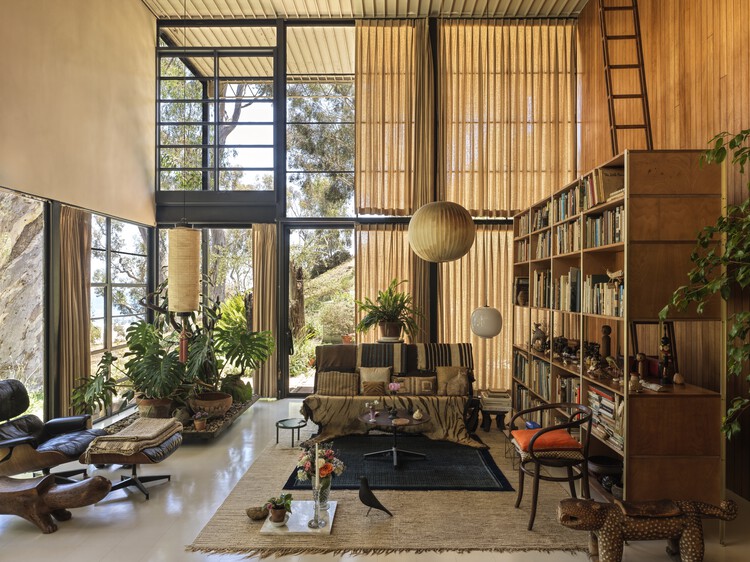 The living room of the Eames House. Image © Chris Mottalini, 2025. Courtesy of 2025 Eames Office, LLC. All rights reserved.
The living room of the Eames House. Image © Chris Mottalini, 2025. Courtesy of 2025 Eames Office, LLC. All rights reserved.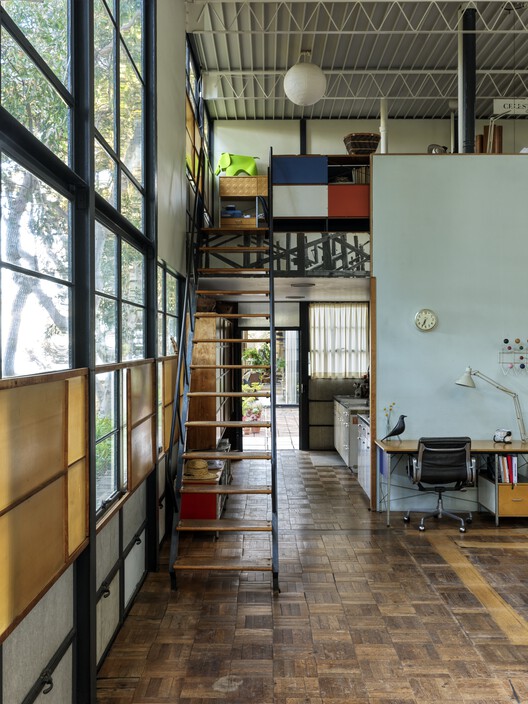 The studio at the Eames House. Image © Chris Mottalini, 2025. Courtesy of 2025 Eames Office, LLC. All rights reserved.
The studio at the Eames House. Image © Chris Mottalini, 2025. Courtesy of 2025 Eames Office, LLC. All rights reserved.
Coinciding with the reopening, the Eames family has announced the formation of the Charles & Ray Eames Foundation, a nonprofit organization dedicated to preserving and expanding the couple’s multidisciplinary legacy across architecture, design, education, and visual culture. The Foundation evolves from the Eames House Preservation Foundation, established in 2004, and will take on broader responsibilities in programming, research, and international collaboration. As part of its mandate, the Foundation will oversee long-term conservation of the Eames House, in partnership with the Getty Conservation Institute. The implementation of a Conservation Management Plan is now underway and will guide the site’s preservation efforts in the coming years. This aligns with ongoing efforts by preservationists and conservation architects to maintain Case Study House No. 8 as an exemplar of mid-20th-century modernism and a living archive of experimental residential design.
Programming from the Foundation will include a wide range of initiatives of particular interest to the design and architecture community. The upcoming Eames Architecture program, scheduled for 2026, will explore the couple’s contributions to residential architecture, particularly in the realm of prefabrication and experimentation with industrial materials. In 2026, the Foundation will host the inaugural Eames Conference in Los Angeles, convening scholars, architects, designers, and curators to explore new perspectives on the Eames legacy. It will also serve as a platform to coordinate collaboration among institutions with Eames holdings, including the Library of Congress, Vitra Design Museum, The Henry Ford, The Museum of Modern Art, and the Eames Institute of Infinite Curiosity. In 2027, the Foundation will lead the 50th anniversary reintroduction of Powers of Ten, the landmark educational film that has influenced generations of designers, educators, and scientists.
Related Article Charles and Ray Eames: The Designers Who Shaped the Course of Modernism 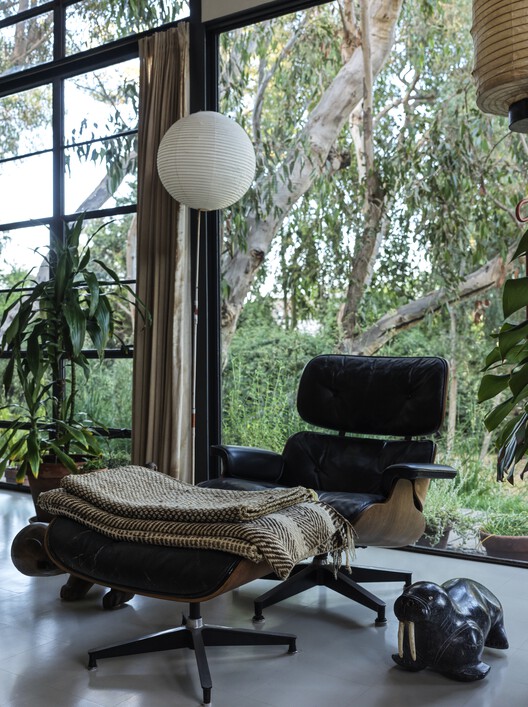 The interior of the Eames House. Image © Chris Mottalini, 2025. Courtesy of 2025 Eames Office, LLC. All rights reserved.
The interior of the Eames House. Image © Chris Mottalini, 2025. Courtesy of 2025 Eames Office, LLC. All rights reserved.
Other initiatives include the Charles & Ray Eames Fellowship, a three-year research appointment to support new scholarship. Catherine Ince, former Chief Curator of V&A East and curator of The World of Charles and Ray Eames at the Barbican Art Gallery, will serve as the inaugural Fellow. Her work will culminate in a contemporary reassessment of the Eameses’ legacy across disciplines. The Foundation will also publish the Eames Norton Lectures in their entirety for the first time, presenting Charles Eames‘s 1970–71 lecture series at Harvard, long considered an essential articulation of the couple’s design philosophy. Educational outreach will include new programs for high school students in partnership with AIA Los Angeles and Architecture for Communities Los Angeles, with a goal of introducing the Eames design process as a tool for creativity and social impact.
In parallel efforts to preserve architectural heritage, the Grand Palais in Paris has reopened following the most extensive renovation in its 120-year history, led by Chatillon Architectes. In Italy, David Chipperfield Architects Milan has unveiled the preliminary design for the restoration and adaptive reuse of the Roman Theatre in Brescia, commissioned by Fondazione Brescia Musei in collaboration with local civic institutions. In the United States, the Getty Foundation‘s Conserving Black Modernism initiative has entered its third funding cycle, supporting five new projects to preserve the work and legacy of African American architects within the Modernist movement.




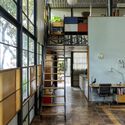

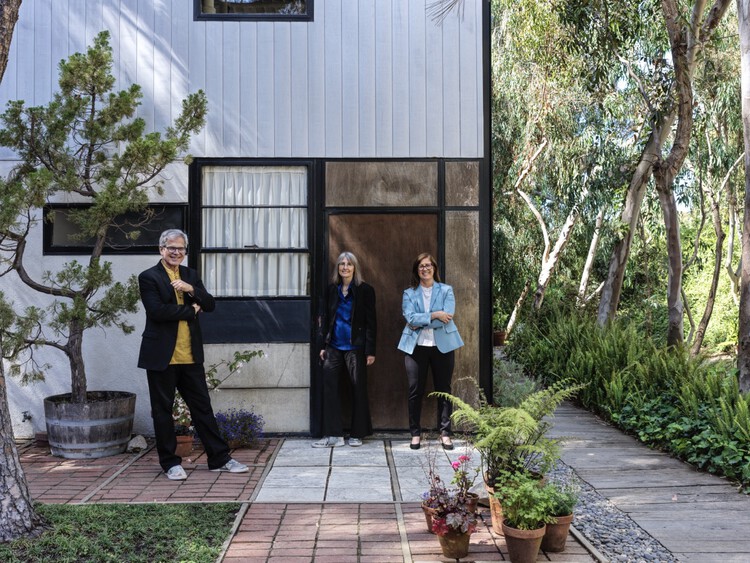 Eames Demetrios, Lucia Dewey Atwood, and Adrienne Luce outside the studio. Image © Chris Mottalini, 2025. Courtesy of 2025 Eames Office, LLC. All rights reserved.
Eames Demetrios, Lucia Dewey Atwood, and Adrienne Luce outside the studio. Image © Chris Mottalini, 2025. Courtesy of 2025 Eames Office, LLC. All rights reserved.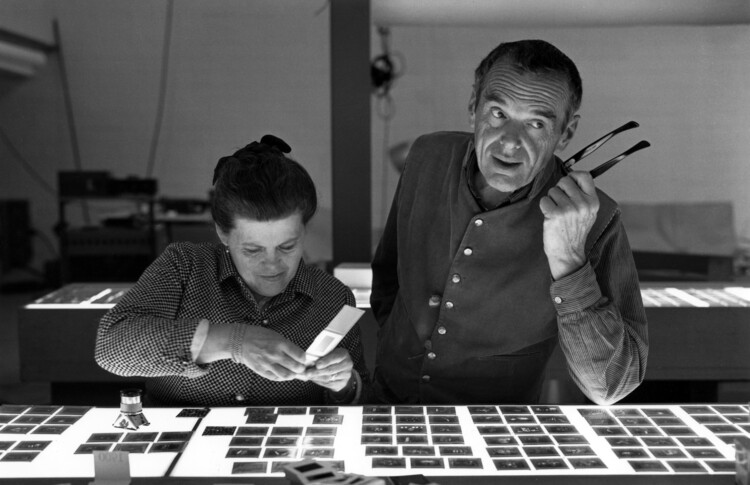 Charles and Ray sorting and selecting photographic slides at the Eames Office, circa late 1960s. Image Courtesy of 2025 Eames Office, LLC. All rights reserved.
Charles and Ray sorting and selecting photographic slides at the Eames Office, circa late 1960s. Image Courtesy of 2025 Eames Office, LLC. All rights reserved.